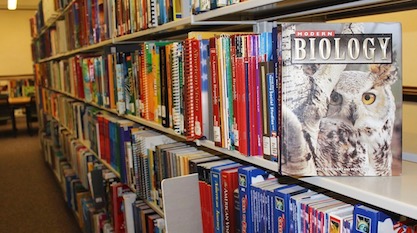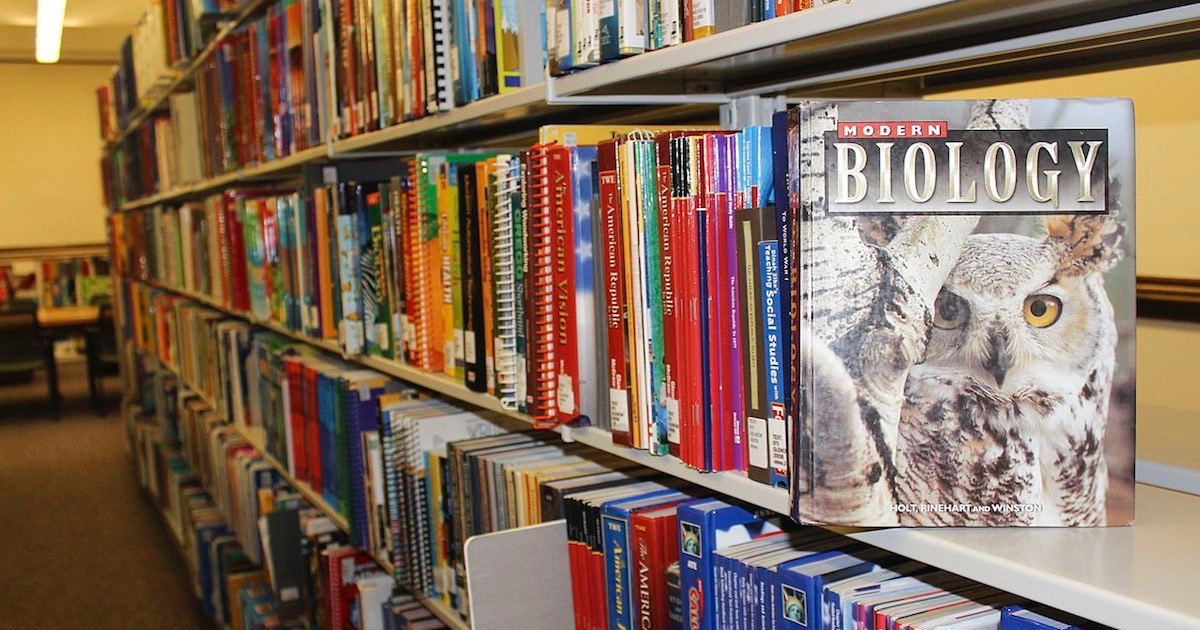 Education
Education
Biased School Textbooks Aren’t Limited to Biology


Welcome to the battleground of public schools. Where the stakes are so high, it’s not surprising that the fights are so hotly contentious.
Textbook publishers use their influence over kids and the appearance of neutrality to advance a set of strong biases. With respect to evolution, Jonathan Wells and others have documented this in the past. But here’s another recent case on a different subject: James Fraser’s AP US History textbook, By the People. At National Review, Stanley Kurtz has the story. He notes: “The most underappreciated political story of our time is the changing content of K-12 textbooks in history, civics, social studies, and related subjects.”
I would like to point out a few key things. First, there’s a problem on the part of the big player in the high school education game: the College Board, which writes and administers the AP US History test and to which Pearson Education, publisher of By the People, must kowtow. Kurtz writes: “By the People also shows us that the College Board’s controversial decision to cover ‘history’ right up to the present is a recipe for political abuse, just as critics claimed.” Especially concerning, he thinks, is coverage of the 2016 election. Maybe I have more confidence in kids. They will have neighbors, family members, and friends who don’t think as this textbook does, and the bias so clear. It’s more worrying when the subject matter is something where students have no independent knowledge to check against statements in the textbook.
Second, the article records troubling political views from the textbook’s author James Fraser, who is very liberal. Partisan concerns aren’t my focus here. There is one issue, however, that goes way beyond politics. Kurtz writes:
[A]s an historian of education, Fraser also invokes his extensive knowledge of textbooks. His most striking claim is that the textbooks used under Eastern European Communism were excellent in substance, even if their lessons were hammered home too harshly by teachers: “…in their critique of capitalism and imperialism, in their sophisticated approach to anti-Semitism, Fascism, and revolutionary struggle — [these textbooks] represented a very liberating view of the world…But sadly the pedagogy was as repressive as the content was liberating.”
Textbooks under Eastern European Communism…as a model for American students to look up to and admire? This is an idea that should really give pause.
Here’s the point. If a new and ostensibly very mainstream history textbook is so locked into pushing an ideological agenda, it’s definitely unsurprising to find biology textbooks pushing their own biases. Indeed, a popular biology textbook that’s problematic on evolution, Miller and Levine’s Biology, is published by none other than Pearson — which also publishes By the People.
As Jonathan Wells writes in the first pages of his 2017 book, Zombie Science:
Zombies are the walking dead. In science, a theory or image is dead when it doesn’t fit the evidence. I wrote a book in 2000 about ten images, ten “icons of evolution,” that did not fit the evidence and were empirically dead. They should have been buried, but they are still with us, haunting our science classrooms and stalking our children.
These images Wells mentions include the Miller-Urey experiment, Archaeopteryx, Haeckel’s embryos, and more.
All this textbook talk makes me think of Texas, and our stalwart Fellow Dr. Ray Bohlin who served as a textbook reviewer in 2013 and on the biology standards streamlining committee in 2016-17. Evolution education in public schools is a crazy area, folks — it certainly has its own Frasers and College Boards — but it is an important controversy in which I feel privileged to engage.
Photo credit: University of Illinois Library (Textbooks in the Curriculum Collection) [CC BY 2.0], via Wikimedia Commons.
